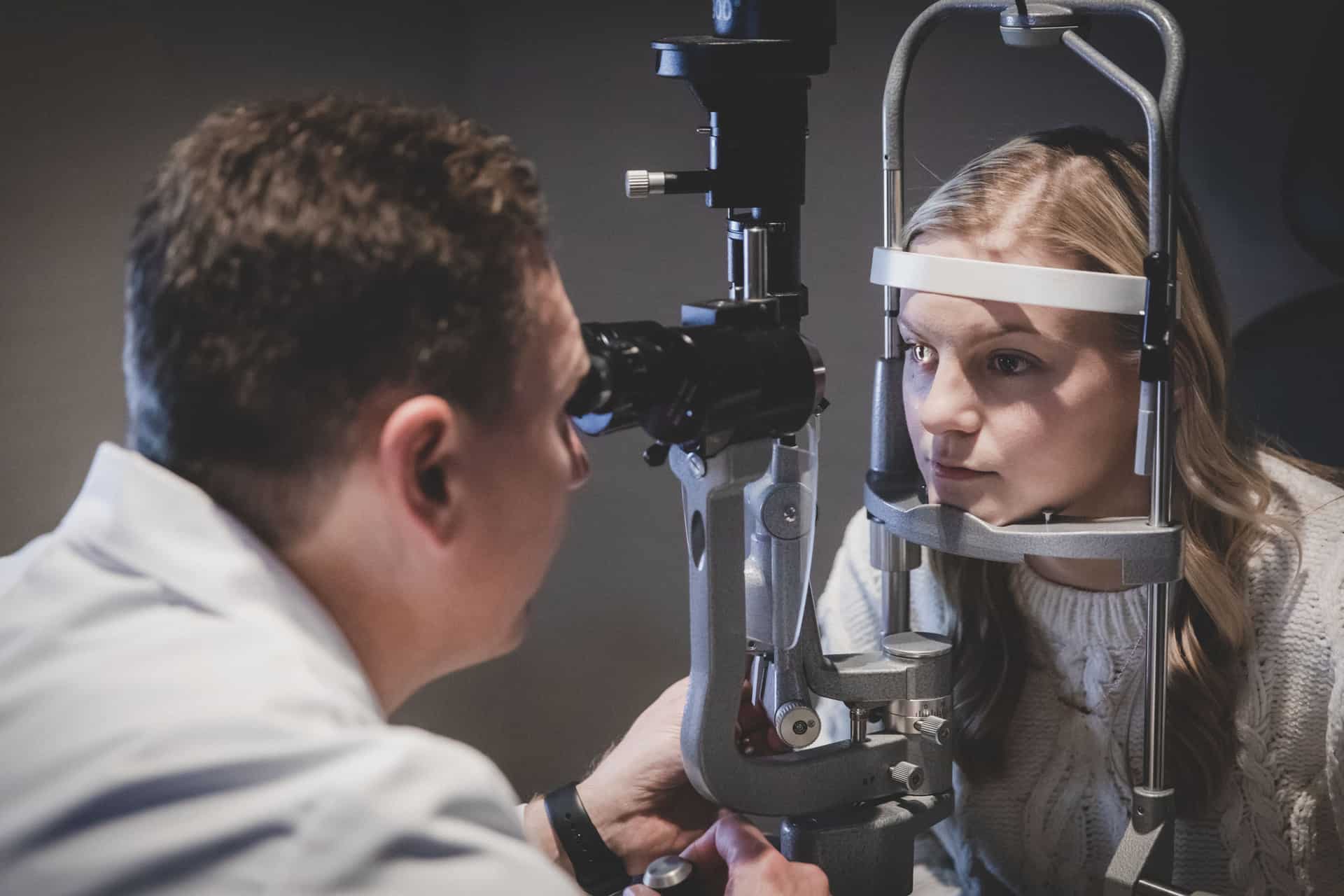In-Depth Eye Testing and Exams Help Durrie Vision Determine if You’re a Candidate for Laser Vision Correction in Overland Park
When it comes to eye surgery, you want to be certain. Certain that you’re choosing the best doctor in the area. Certain that the procedure will yield the results you’re looking for. And certain that you’re a great candidate for it, too.
Durrie Vision is all about certainty, which is why our refractive surgeons developed an in-depth screening process to better understand the details of our patients’ vision and eye health.
The first and most important step in determining candidacy for one of our laser vision correction or refractive eye surgeries is the Advanced Ocular Analysis, or AOA.
How We Determine Candidacy for LASIK Surgery, Refractive Cataract Surgery, and More
A simple routine eye exam or screening often misses important information critical to your surgery outcomes. The AOA at Durrie Vision uses cutting-edge technology to create a three-dimensional visualization and analysis of your entire ocular system.
It looks at your eyes from front to back, so that one of our refractive surgeons can create a custom treatment plan just for you. You’ll even meet with your surgeon directly to discuss your results the same day of your consultation and go over your Lifetime Vision Plan, so you understand how your laser vision correction can affect your vision today and over your lifetime.
What Happens During an Advanced Ocular Analysis?
The AOA at Durrie Vision offers the most advanced combination of diagnostics in a single exam. During your AOA, you’ll move through a series of seven screening stations, where one of our technicians will gather information about your eye health and vision. This information determines whether you’re a candidate for one of our procedures and which laser technology will work best for you.
All you have to do is sit and listen to instructions. Each diagnostic tool is similar in basic function to vision-testing tools you’ve used in the past. Most involve resting your chin and forehead against the machine, while it does all the work.
- Specular Microscopy
A specular microscope visualizes and analyzes the layer of the cornea that maintains long-term visual clarity and corneal health. - Lens Densitometry
Early detection for changes in lens density is important for a patient’s Lifetime Vision Plan. Cataract development occurs as lens density changes; the presence of cataracts influences the type of laser vision correction that will work for you. - HD Analyzer
Using simple light rays, this diagnostic tool measures the effects of ocular scatter on total vision. This data helps to determine early cataract or dry eye diagnosis and improves outcomes following a refractive lens exchange or other procedure. - Pentacam – Corneal Topography System
This diagnostic tool maps the surface of the cornea and its underlying layers. Precise measurements of the shape, structure, and thickness of the cornea help to determine which procedure is best and to customize the procedure by selecting the laser technology most suited to your eyes. - Retinal Camera
Also called a fundus camera, the retinal camera takes a digital image of the retina to identify any abnormalities that may be present. - LipiView
LipiView helps our surgeons assess your gland structure responsible for tear production. Tear film plays an important role in recovery and outcomes following laser vision correction. - Optical Coherence Tomography
With resolution millions of times more precise than CT or MRI, the Optical Coherence Tomography tool images the internal structure of your eye down to the individual cell and tissue layers. This can reveal vision issues even a microscope couldn’t see.
How to Book an Advanced Ocular Analysis in Kansas City
If you’re interested in learning more about your candidacy for laser vision correction, then you’ll need to request a consultation at Durrie Vision, conveniently located in Overland Park.
You can do so by calling our office at (913) 491-3330, or by scheduling an appointment on our website.
Plan to spend about an hour and a half in our office for your AOA and meeting with one of our refractive surgeons: Dr. Stahl or Dr. Lindquist.
During your consultation, we encourage you to ask any questions you have about our procedures and the outcome you could expect afterward. Our goal is for you to be perfectly comfortable with your undergoing laser vision correction at Durrie Vision.
In the meantime, take our quick online candidacy test to find out which procedures may be right for your vision goals and your eyes. You can learn more about each procedure we provide on our website, too.

Author Bio: Jason E. Stahl, MD
Top Doctors: https://www.castleconnolly.com/top-doctors/jason-e-stahl-ophthalmology-129cc002150
Best Cataract Surgeons: https://bestcataractsurgeons.com/cataract-surgeons/jason-e-stahl/

